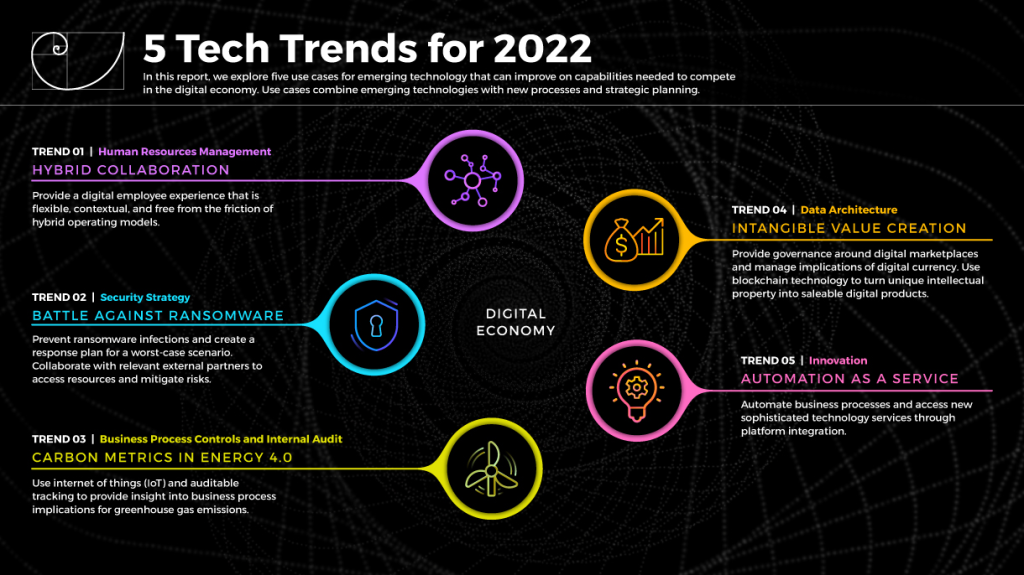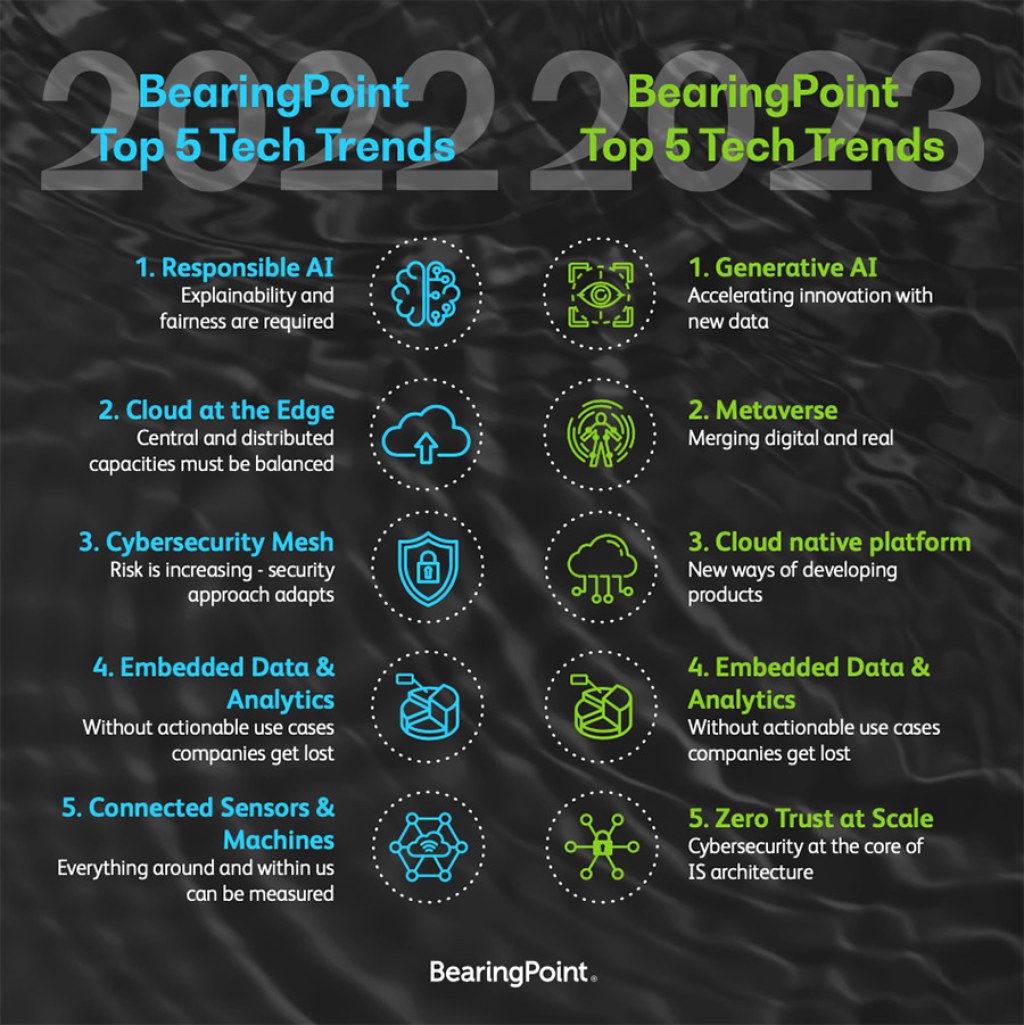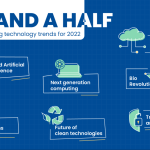Unveiling The 5 Latest Technology Trends: Embrace The Future Now!
5 Latest Technology Trends
Introduction
Hello Readers,
3 Picture Gallery: Unveiling The 5 Latest Technology Trends: Embrace The Future Now!



Welcome to this article where we will explore the 5 latest technology trends that are shaping our world today. Technology is advancing at an astonishing pace, and it is crucial to stay updated with the latest trends to remain competitive in this ever-evolving digital landscape. In this article, we will delve into these trends and discuss their impact on various industries and our daily lives. So, without further ado, let’s dive in!
1. Artificial Intelligence (AI)

Image Source: gcom.cloud
Artificial Intelligence has gained significant momentum in recent years and is revolutionizing various industries. AI-powered technologies such as machine learning, natural language processing, and computer vision are being used to automate processes, enhance decision-making, and improve customer experiences. From virtual assistants like Siri and Alexa to self-driving cars, AI is transforming the way we live and work.
2. Internet of Things (IoT)
The Internet of Things refers to the interconnection of everyday objects via the internet, enabling them to send and receive data. IoT devices, such as smart home appliances, wearables, and industrial sensors, are becoming increasingly prevalent. They allow for remote monitoring, automation, and data analysis, leading to improved efficiency, cost savings, and enhanced user experiences.
3. Blockchain Technology
Blockchain technology, popularized by cryptocurrencies like Bitcoin, is a decentralized and distributed ledger system. It enables secure and transparent transactions without the need for intermediaries. Beyond cryptocurrencies, blockchain has the potential to revolutionize industries such as supply chain management, healthcare, and finance. Its immutability and transparency make it an attractive solution for addressing trust and security concerns.
4. Augmented Reality (AR) and Virtual Reality (VR)

Image Source: infotech.com
AR and VR technologies have gained significant traction in recent years, transforming the way we experience digital content. AR overlays digital information onto the real world, while VR creates a completely immersive virtual environment. These technologies have applications in various industries, including gaming, entertainment, education, and training. From virtual tours to interactive gaming experiences, AR and VR are enhancing engagement and creating new possibilities.
5. Edge Computing
Edge computing involves processing data closer to the source rather than sending it to a centralized cloud server. With the proliferation of IoT devices and the need for real-time data processing, edge computing is becoming increasingly important. It reduces latency, improves reliability, and enhances data privacy. From autonomous vehicles to smart cities, edge computing enables faster and more efficient decision-making.
What are the 5 latest technology trends?

Image Source: consultancy.uk
The 5 latest technology trends are Artificial Intelligence (AI), Internet of Things (IoT), Blockchain Technology, Augmented Reality (AR) and Virtual Reality (VR), and Edge Computing.
Who is driving these technology trends?
Various technology companies, startups, and research institutions are driving these technology trends. Companies like Google, Amazon, and Microsoft are heavily investing in AI and IoT. Blockchain technology is being developed and adopted by organizations such as IBM and Ripple. AR and VR are being driven by companies like Facebook (Oculus) and HTC. Edge computing solutions are being developed by companies like Intel and Cisco.
When will these trends become mainstream?
These technology trends are already making significant strides and are expected to become mainstream in the next few years. AI and IoT are already widely used, with the adoption of blockchain and AR/VR rapidly increasing. Edge computing is also gaining traction, with more devices and networks supporting this technology.
Where are these trends being applied?
These technology trends are being applied across various industries. AI is being used in healthcare for diagnostics and drug discovery, while IoT is revolutionizing industries such as manufacturing and agriculture. Blockchain is finding applications in supply chain management and finance. AR and VR are being applied in gaming, entertainment, and training, while edge computing is being implemented in autonomous vehicles and smart cities.
Why are these trends important?
These trends are important because they have the potential to transform industries, improve efficiency, and enhance user experiences. AI can automate processes and enable better decision-making, while IoT allows for remote monitoring and automation. Blockchain provides secure and transparent transactions, and AR/VR creates immersive experiences. Edge computing enables faster and more efficient data processing, especially in real-time applications.
How are these trends impacting industries?
These trends are impacting industries in various ways. AI is improving healthcare outcomes and optimizing logistics and supply chains. IoT is enabling predictive maintenance and improving resource management. Blockchain is enhancing transparency and security in financial transactions and supply chains. AR/VR is revolutionizing entertainment and training experiences. Edge computing is enabling real-time decision-making and reducing network congestion.
Advantages and Disadvantages of the 5 latest technology trends
1. Artificial Intelligence (AI)
Advantages:
– Automation of tasks leading to increased efficiency.
– Improved customer experiences through personalized recommendations.
– Enhanced decision-making through data analysis.
Disadvantages:
– Potential job displacement due to automation.
– Ethical concerns regarding privacy and bias.
– Dependence on data quality and accuracy.
2. Internet of Things (IoT)
Advantages:
– Remote monitoring and control of devices for improved efficiency.
– Predictive maintenance, reducing downtime and costs.
– Real-time data analysis for better decision-making.
Disadvantages:
– Security vulnerabilities and privacy concerns.
– Interoperability challenges between different IoT devices.
– Increased complexity in managing large-scale deployments.
3. Blockchain Technology
Advantages:
– Transparent and secure transactions without intermediaries.
– Improved traceability and accountability in supply chains.
– Reduced fraud and counterfeit activities.
Disadvantages:
– Scalability issues with current blockchain implementations.
– Energy-intensive mining processes for cryptocurrencies.
– Regulatory and legal challenges.
4. Augmented Reality (AR) and Virtual Reality (VR)
Advantages:
– Immersive experiences for entertainment and training.
– Enhanced visualization and understanding of complex concepts.
– Increased engagement and interactivity.
Disadvantages:
– High costs of AR/VR devices and content creation.
– Limited adoption due to technological barriers.
– Potential health and safety concerns with prolonged use.
5. Edge Computing
Advantages:
– Reduced latency and faster response times.
– Enhanced reliability and availability of services.
– Improved data privacy and security.
Disadvantages:
– Higher upfront costs for edge infrastructure.
– Limited scalability in comparison to cloud computing.
– Complexity in managing distributed edge networks.
FAQs (Frequently Asked Questions)
1. Are these technology trends accessible to everyone?
Yes, these technology trends are accessible to both individuals and businesses. The availability of affordable devices and services has made them more accessible to a broader audience.
2. Are there any ethical concerns with AI and IoT?
Yes, there are ethical concerns surrounding AI and IoT. Issues such as privacy, data security, and bias in algorithms need to be addressed to ensure responsible and ethical use of these technologies.
3. Can blockchain be used for purposes other than cryptocurrencies?
Absolutely! Blockchain technology has applications beyond cryptocurrencies. It can be used for secure document verification, supply chain management, healthcare records, and more.
4. What industries can benefit the most from AR and VR?
Industries such as gaming, entertainment, education, real estate, and healthcare can benefit significantly from AR and VR technologies.
5. How can edge computing improve the performance of IoT devices?
Edge computing reduces the need to send data to a centralized cloud server, enabling faster response times and minimizing network congestion. This improves the overall performance of IoT devices.
Conclusion
In conclusion, the 5 latest technology trends – Artificial Intelligence, Internet of Things, Blockchain Technology, Augmented Reality and Virtual Reality, and Edge Computing – are revolutionizing industries and transforming our daily lives. These trends offer numerous advantages, such as increased efficiency, enhanced user experiences, and improved decision-making. However, they also come with their fair share of challenges and disadvantages. It is crucial for individuals and businesses to stay informed about these trends and adapt to leverage their benefits effectively. Embracing these technologies and understanding their implications will enable us to thrive in the digital age.
Final Remarks
Friends, technology is constantly evolving, and keeping up with the latest trends is essential to remain competitive. While these 5 technology trends offer immense potential, it is crucial to approach their implementation thoughtfully and responsibly. As with any new technology, there are risks and challenges that need to be addressed. It is our collective responsibility to ensure that these technologies are harnessed for the greater good and contribute positively to our society and the world at large. Let us embrace these trends with open minds and work towards a future where technology empowers us all. Thank you for reading!
This post topic: Latest Technology Trends

